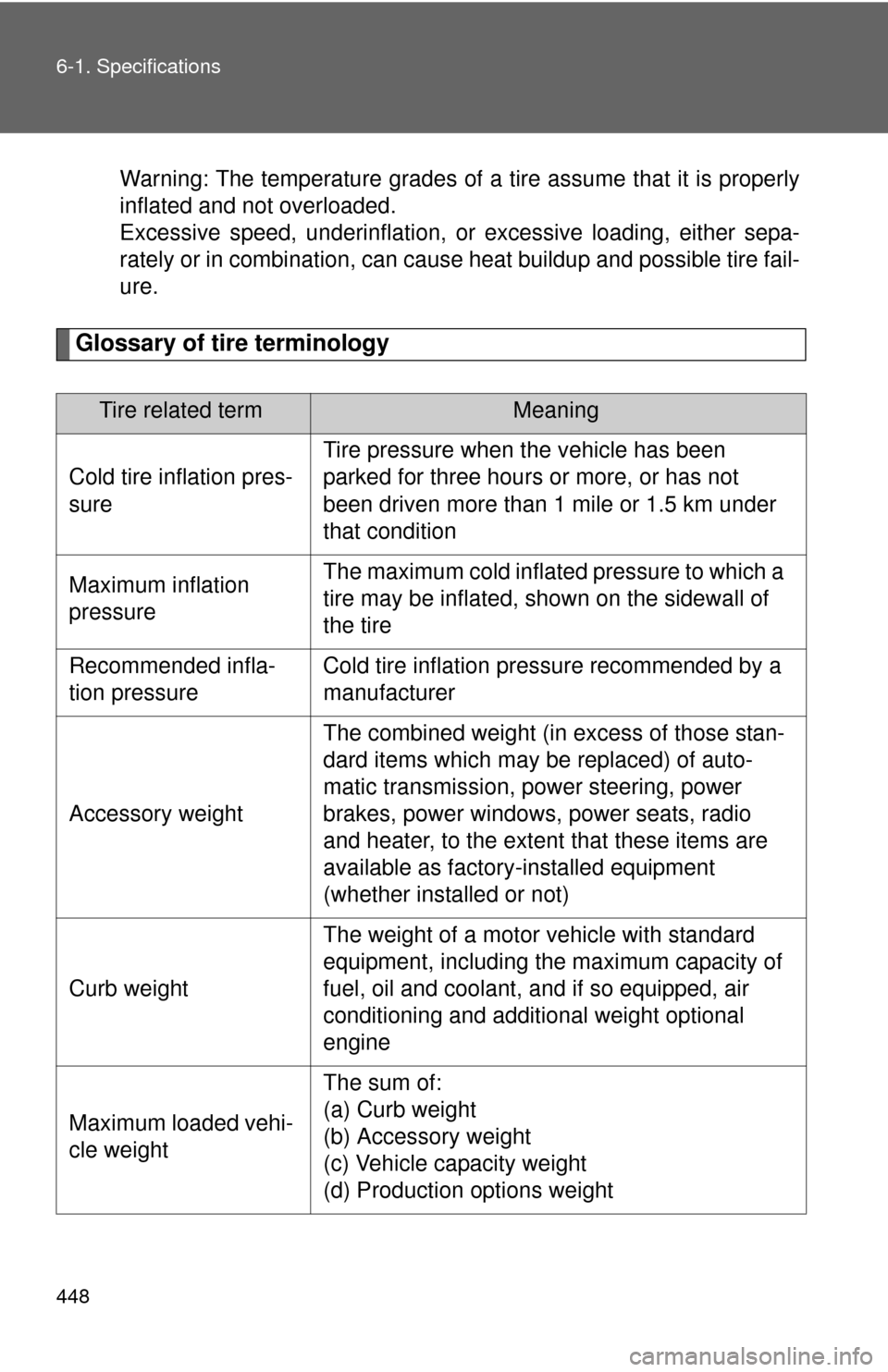Page 5 of 476

1
2
3
4
5
6
7
5
5-1. Essential information ....... 374If your vehicle needs to be towed ........................... 374
If you think something is wrong ............................ 377
Fuel pump shut off system .............................. 378
Event data recorder ............ 379
5-2. Steps to take in an emergency ....................... 381
If a warning light turns on or a warning buzzer
sounds... ......................... 381
If a warning message is displayed (vehicles with
multi-information
display) ............................. 391
If you have a flat tire............ 400
If the engine will not start .... 411
If the shift lever cannot be shifted from P (automatic
transmission) .................... 413
If you lose your keys ........... 414
If the electronic key does not operate properly
(vehicles with smart key
system) ............................. 415
If the battery is discharged ........................ 417
If your vehicle overheats ..... 421
If the vehicle becomes stuck ................................. 424 6-1. Specifications ................... 428
Maintenance data (fuel, oil level, etc.) ........... 428
Fuel information.................. 439
Tire information .................. 442
6-2. Customization................... 454 Customizable features........ 454
6-3. Initialization....................... 458 Items to initialize ................. 458
Reporting safety defects for U.S. owners ................ 460
Abbreviation list ........................ 462
Alphabetical index .................... 463
What to do if... ......................... 473
5When trouble arises6Vehicle specifications
7For U.S. owners
Index
Page 311 of 476

311
4-3. Do-it-yourself maintenance
4
Maintenance and care
CAUTION
The engine compartment contains many mechanisms and fluids that may
move suddenly, become hot, or become electrically energized. To avoid death
or serious injury observe the following precautions.
■
When working on the engine compartment
●Keep hands, clothing, and tools away from the moving fan and engine
drive belt.
● Be careful not to touch the engine, radiator, exhaust manifold, etc. right
after driving as they may be hot. Oil and other fluids may also be hot.
● Do not leave anything that may burn easily, such as paper or rags, in the
engine compartment.
● Do not smoke, cause sparks or expose an open flame to fuel or the bat-
tery. Fuel and battery fumes are flammable.
● Be extremely cautious when working on the battery. It contains poisonous
and corrosive sulfuric acid.
● Take care because brake fluid can harm your hands or eyes and damage
painted surfaces.
If fluid gets on your hands or in your eyes, flush the affected area with
clean water immediately.
If you still experience discomfort, see a doctor.
■ When working near the electric c ooling fans or radiator grille
Vehicles with smart key system: Be sure the “ENGINE START STOP” switch
is OFF. With the “ENGINE START STOP” switch in IGNITION ON mode, the
electric cooling fans may automatically start to run if the air conditioning is on
and/or the coolant temperature is high. ( P. 326)
Vehicles without smart key system: Be sure the engine switch is OFF. With
the engine switch in “ON” position, the electric cooling fans may automati-
cally start to run if the air conditioning is on and/or the coolant temperature is
high. ( P. 326)
■ Safety glasses
Wear safety glasses to prevent flying or falling material, fluid spray, etc. from
getting in the eyes.
Page 382 of 476

382 5-2. Steps to take in an emergency
Stop the vehicle immediately.The following warning indicates the possibility of damage to the vehi-
cle that may lead to an accident. Immediately stop the vehicle in a
safe place and contact your Toyota dealer.
Have the vehicle inspected immediately.Failing to investigate the cause of the following warnings may lead to
the system operating abnormally and possibly cause an accident.
Have the vehicle inspected by your Toyota dealer immediately.
Warning lightWarning light/Details
Charging system warning light Indicates a malfunction in the vehicle’s charging system.
Low engine oil pressure warn ing light (vehicles without
multi-information display) Indicates that the engine oil pressure is too low.
Warning lightWarning light/Details
(U.S.A.)
(Canada) Malfunction indicator lamp
Indicates a malfunction in:
• The electronic engine control system;
• The electronic throttle control system; or
• The electronic automatic transmission control system.
SRS warning light
Indicates a malfunction in:
• The SRS airbag system;
• The front passenger occupant classification system; or
• The seat belt pretensioner system.
Page 434 of 476
434 6-1. Specifications
Electrical system
Manual transaxle
Automatic transaxle
*: The fluid capacity is a reference quantity. If replacement is neces-
sary, contact your Toyota dealer.
Battery
Open voltage at
68 F (20 C): 12.6 12.8 V Fully charged
12.2 12.4 V Half charged
11 . 8
12.0 V Discharged
(Voltage checked 20 minutes after the
engine and all the lights turned off)
Charging rates 5 A max.
Gear oil capacity (Reference) 2.6 qt. (2.5 L, 2.2 Imp.qt.)
Gear oil type API GL-4 or 5
Recommended gear oil
viscosity SAE 75W-90
Fluid capacity
(drain and refill)2.4 L 4-cylinder (2AZ-FE) engine:
3.7 qt. (3.5 L, 3.1 Imp.qt.)
Fluid capacity
3.5 L V6 (2GR-FE) engine:
6.76 qt. (6.4 L, 5.63 Imp.qt.)*
Fluid type
Toyota Genuine ATF WS
Page 448 of 476

448 6-1. Specifications
Warning: The temperature grades of a tire assume that it is properly
inflated and not overloaded.
Excessive speed, underinflation, or excessive loading, either sepa-
rately or in combination, can cause heat buildup and possible tire fail-
ure.
Glossary of tire terminology
Tire related termMeaning
Cold tire inflation pres-
sure Tire pressure when the vehicle has been
parked for three hours or more, or has not
been driven more than 1 mile or 1.5 km under
that condition
Maximum inflation
pressure The maximum cold inflated
pressure to which a
tire may be inflated, s hown on the sidewall of
the tire
Recommended infla-
tion pressure Cold tire inflation pressure recommended by a
manufacturer
Accessory weight The combined weight (in excess of those stan-
dard items which may be replaced) of auto-
matic transmission, power steering, power
brakes, power windows, power seats, radio
and heater, to the extent that these items are
available as factory-installed equipment
(whether installed or not)
Curb weight The weight of a motor vehicle with standard
equipment, including the maximum capacity of
fuel, oil and coolant, and if so equipped, air
conditioning and additional weight optional
engine
Maximum loaded vehi-
cle weight The sum of:
(a) Curb weight
(b) Accessory weight
(c) Vehicle capacity weight
(d) Production options weight